You refill the bird feeder, head inside, and by morning, it’s empty—again. Scattered shells, knocked-over poles, and those unmistakable little paw prints give away the culprits. If you’ve ever had raccoons raid your backyard buffet, you know they’re not just visiting. They’re moving in.I used to think a simple fix—moving the feeder, tightening a lid, maybe adding a new latch—would be enough. But raccoons? They treat every obstacle like a puzzle and trust me, they love solving puzzles. It didn’t take long before I realized that if I wanted to keep raccoons away from bird feeders, I had to stop thinking like a birdwatcher and start thinking like a raccoon.
Why Raccoons Are So Good at Ruining Bird Feeders
The thing about raccoons is that they don’t give up—at least, not easily. If something works once, they’ll keep doing it. And if you block them? They’ll figure out another way in. Unlike squirrels, who rely on speed and agility, raccoons use their hands. They’ll pry open lids, undo clasps, and even hang upside down if that’s what it takes.
And once they’ve found a reliable food source? They don’t forget. You’re on their permanent late-night snack route.
So, the goal isn’t to make it completely impossible—because, let’s be real, nothing is raccoon-proof forever. It’s about making your feeder so inconvenient that they decide it’s just not worth the effort.
What Actually Works Against Raccoons
Here’s a rundown of effective ways to deter raccoons from bird feeders. From squirrel-proof feeders to scent deterrents, let’s explore each method in detail about how to deter raccoons from your bird feeders.
1. Get a Feeder That’s Built for Raccoons, Not Just Squirrels
Squirrel-proof feeders might stop smaller thieves, but raccoons? They’re too heavy, too strong, and too determined. The best bet is a weight-sensitive feeder designed for larger animals—one that closes shut when anything heavier than a bird lands on it.
The first time I watched a raccoon try to outsmart mine, I couldn’t help but laugh. He hung from the pole, swung a little, and then—bam. Feeder shut. He gave me this look like, Really? and shuffled away. (A good example of such feeders is Woodlink Absolute II).

2. Use a Baffle (And Put It in the Right Spot)
A baffle is one of the easiest ways to keep raccoons off feeders—as long as you install it correctly. Too low? They’ll jump over it. Too small? They’ll grab the edges and pull themselves up.For raccoons, you need a wide, smooth baffle at least 5 feet off the ground. Anything smaller, and they’ll just treat it like an obstacle course.
In the picture below, that baffle isn’t doing much—it’s too small and not high enough to stop raccoons. These clever climbers can jump several feet straight up, and a small baffle just becomes a stepping stone. For real protection, go for a wide, smooth baffle at least 5 feet off the ground—anything less, and the raccoons will treat it like an easy obstacle course.
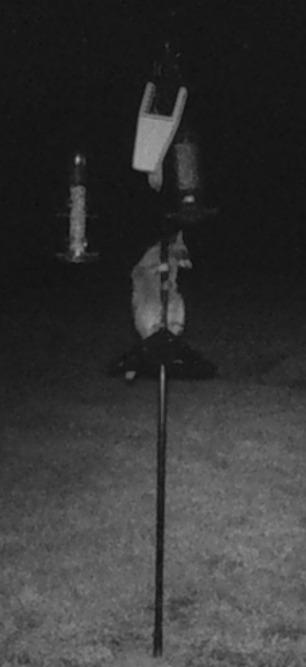
Now this is how you stop raccoons from climbing your bird feeder (picture below). A properly sized baffle (it should be longer than a squirrel baffle) like this keeps them from reaching the seeds, blocking their usual climbing tricks. Just make sure there aren’t any nearby trees, fences, or railings they can launch from—raccoons are sneaky, and if they can find a way around, they will.

3. Add Spikes to Stop Raccoons from Climbing
If raccoons are still managing to scale your feeder pole—even past a baffle—it’s time to step things up with spikes. These wire or triangular barriers make it impossible for them to grip, turning their climb into a frustrating (and unsuccessful) effort.
I installed a set after watching raccoons shimmy around my baffle like it was an Olympic event. The first night? A few tufts of fur left behind. The second night? Fewer attempts. By the third? No raccoons.
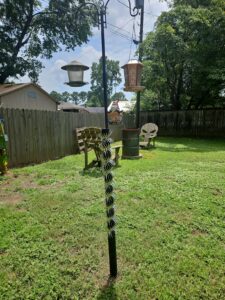
To make it work:
- Wrap the pole and collar with wire spikes so they stick out at different angles.
- Use sturdy materials like stainless steel ties instead of flimsy plastic.
- Wear gloves—trust me, these things are sharp.
4. Move the Feeder Away from Jumping Spots
It’s not just about how high the feeder is—it’s about what’s nearby. I learned this the hard way. A raccoon can jump nearly 4 feet straight up and 10 feet across if they have something to launch from. If your feeder is near a tree, fence, or deck railing, you might as well roll out a welcome mat.After moving mine 10 feet away from anything climbable, my raccoon problems dropped significantly.
5. Hot Pepper Bird Seed: The Trick That Works (Most of the Time)
According to the National Pesticide Information Center capsaicin, the stuff that makes peppers spicy, doesn’t bother birds. But raccoons? They hate it.I started sprinkling hot pepper flakes into the seed and within a few nights, the raccoons stopped showing up. I even tried pre-treated hot pepper suet—same result. Just make sure to reapply after it rains, or it loses its effect.
Pro Tip: Want an extra layer of raccoon defense? Try a homemade repellent that actually works. Heat up a few cups of water, mix in cayenne pepper and either garlic or onion, then let it cool. Add a few drops of dish soap, pour it into a spray bottle, and mist it around your feeder area. Raccoons hate the smell and taste, but birds won’t even notice.
6. Motion-Activated Sprinklers: Startle Them Into Leaving
Raccoons hate surprises, and a sudden blast of water is usually enough to send them running. I set up a motion-activated sprinkler near my feeder, and the first time it went off? The raccoon practically backflipped.The downside? They get used to it. Move it around every few nights so they don’t figure out the pattern.
6. Soap on the Feeder Pole (Weird, But It Works)
One night, after scrubbing down my metal feeder pole with dish soap, I forgot to rinse it off. The next morning? No raccoons. Turns out, soap makes metal poles too slippery for them to climb.
Now, I give my feeder pole a good wipe-down every few days with dish soap or vegetable oil. It doesn’t last forever, but it makes climbing a lot harder.
7. Make the Feeder Pole Impossible to Climb
If raccoons can’t get a grip, they can’t climb. A smooth metal or PVC pole at least six feet tall is one of the best defenses.
My feeder used to be on a wooden post, which—surprise, surprise—worked great for raccoons. Once I switched to a tall metal pole, they struggled a lot more. Pair that with a baffle, and it’s almost a guaranteed win.
The Combo That Finally Worked and How I managed Deterring Raccoons from My Bird Feeders
I can’t even count how many times I thought I had finally outsmarted the raccoons.
I mean, I knew they were clever, but I didn’t realize they were basically furry little con artists with a talent for acrobatics. The first time I set up a weight-sensitive feeder, I actually felt pretty smug about it. “Ha! Try to get into this, you little thieves,” I thought.
Yeah. That lasted two days.
The first night, I heard rustling but figured it was just the usual backyard nightlife. The second night? I looked out the window, and there it was—a raccoon. Hanging upside down. Swinging. Using one tiny paw to scoop out birdseed while the other clung to the feeder like it was in the Olympics.
At that point, I had two choices:
1. Admit defeat.
2. Step up my game.
Obviously, I chose option two.
After way too much trial and error (and way too many raccoon victory dances in my yard), I finally landed on a setup that actually works. A weight-sensitive feeder that slams shut when anything too heavy lands on it. A baffle that makes the pole impossible to climb. And just for good measure? A tall metal pole covered in dish soap because if they’re going to try, I want to at least watch them fail spectacularly.
Do they still show up? Sure. But now, instead of pulling off nightly birdseed heists, they just sit at the bottom of the pole, staring up at the feeder like they’re recalculating all their life choices.And honestly?
I’ll take the win.

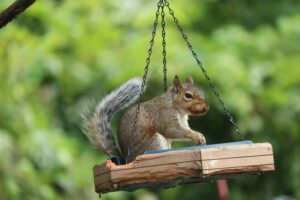
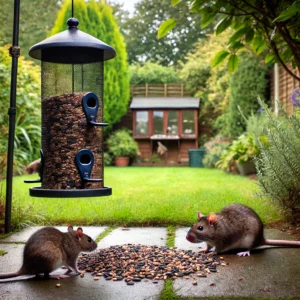
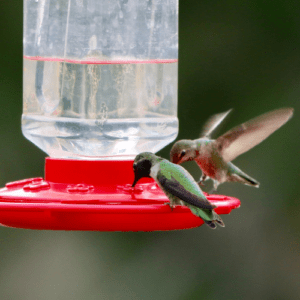

This is really fascinating, You are an overly skilled blogger.
I have joined your feed and stay up for looking for more of your wonderful
post. Additionally, I have shared your website
in my social networks